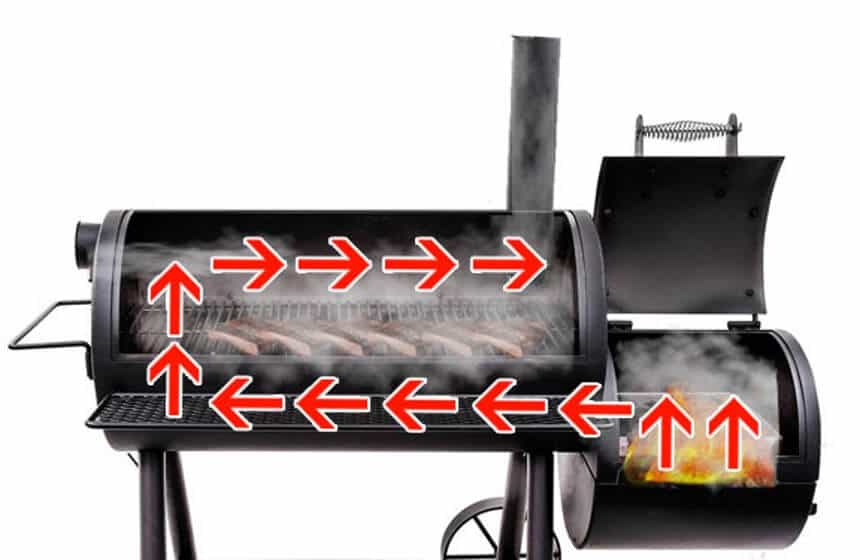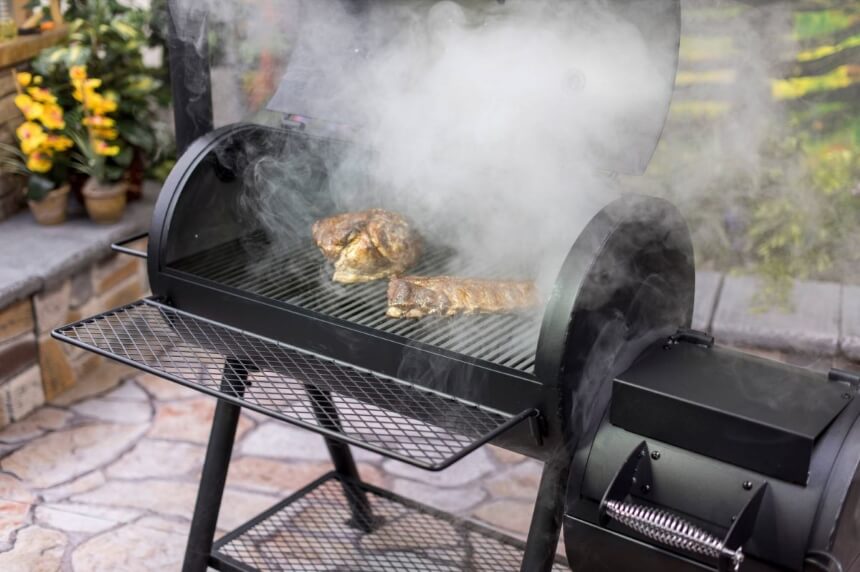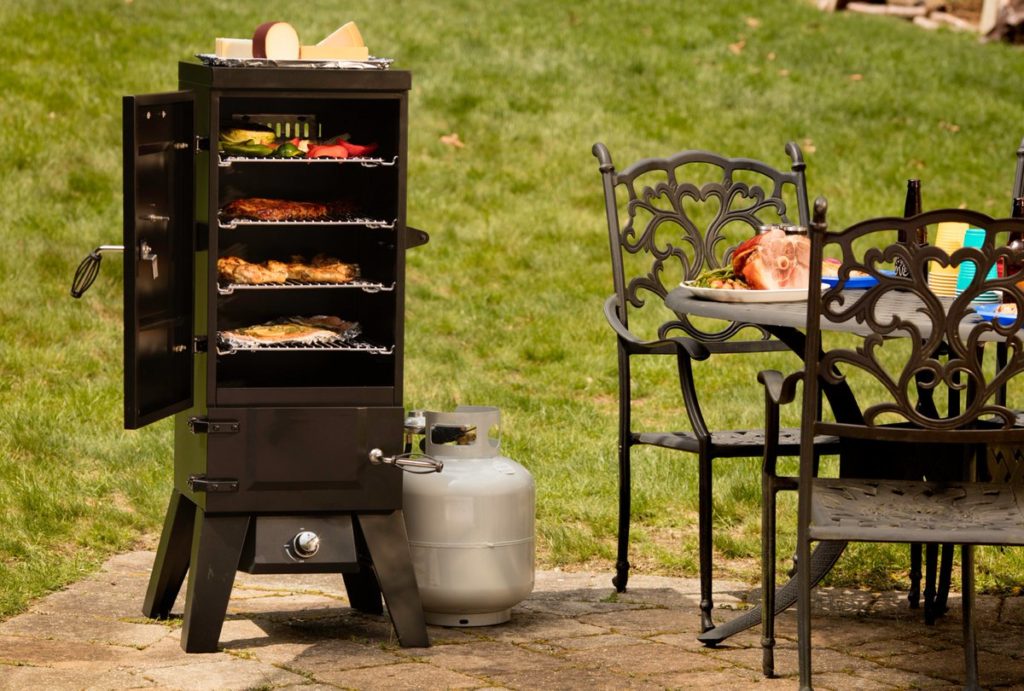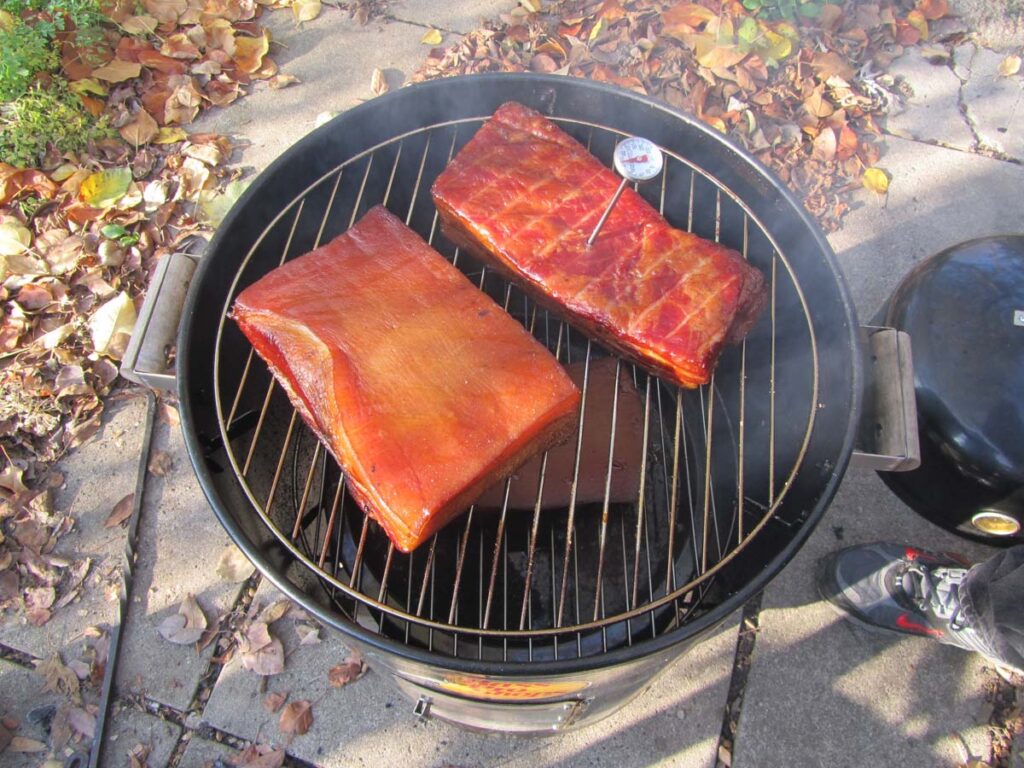

If you’re a keen griller and enjoy outdoor cooking, you may have considered getting a smoker. Smoke units not only add a distinct flavor to your dishes, but they also allow you to maintain a consistent temperature for succulent meals.
However, there are lots of smokers and the terminology can be a little confusing. This may leave you wondering what is a reverse flow smoker and how it could benefit your cooking?
In this article, we’ll explore the differences between reverse flow smokers and other types of smoke units, how it works and which one would be the best option for you.

A reverse flow smoker has a chimney on the same side as the firebox. The smoke from the firebox is directed by another baffle plate to the other side of the smoker, so it is drawn back across the grill to the chimney. This additional baffle reverses the smoke flow for more even distribution. This baffle plate also shields the food further from the direct heat. Finally, it cools the smoke for a more manageable internal temperature, which makes it easier to cold smoke.
Using a reverse flow smoker is easy. As with many of charcoal smokers you can use a chimney starter to help to light your charcoal. Place this into the firebox with some hardwood pieces to create a stronger smoky flavor. Adjust the dampers and place your meat on the cooking racks, closing the lid.
Monitor the temperature approximately every hour, adding more charcoal or wood when necessary. All you need to do is keep smoking until your meat is tender. Once the cut has reached the appropriate internal temperature, remove the meat and allow them to rest for approximately 10 minutes before you serve.
Since the design of a reverse flow smoker is a tweak of an offset smoker, you may wonder what is better a reverse flow or offset smoker? In order to answer this question, you need to appreciate that both models have their advantages and disadvantages. We’ll look at these in more detail to help you make an informed purchase decision.

However, there are some potential drawbacks to a reverse flow smoker. For example, the uniform heat distribution can be a disadvantage if you’re cooking different foods requiring different cook temperatures. It can also take a while for the unit to heat up and it can use more fuel. Additionally, they are best suited to low and slow cooking, so you will need to be prepared to wait to complete the smoking process. Finally, most models feature welded metal plates inside the unit, which can make cleaning trickier.

The temperature will differ from model to model, so you will need to regularly check the fire and temperature approximately every 20 minutes. You will also need to keep an eye on the smoke coming out of the chimney. If it is white smoke, there may be an issue in the firebox. If you do need to add a new log, you’ll need to only open the firebox door a crack to ensure the temperature quickly gets back up.
Additionally, you can experience a difference of up to 75ºF between sides of the cooking chamber, so you will need to rotate your meat for even cooking.
However, offset smokers do tend to be more efficient and more aesthetically pleasing. Additionally, you can cook different foods that need different temperatures at the same time. You can place meats that require higher cooking temperatures in the hotter areas of the cooking chamber, leaving the cooler areas for other foods.
While using an offset smoker can be a huge learning curve, once you’ve practiced using one, you are sure to get the desired results.
So, which is the better option for you? Since both types of model have their own potential advantages and disadvantages, you will need to think about your own particular requirements.
If you prefer clean smoke and want to cook in different heat zones, an offset smoker is a good option for you. However, you will need to be prepared to practice using the smoker as it can take confidence to get the best results.
So, which style of smoker is better will depend on your specific needs.
If you prefer low, slow cooking with consistent temperatures and you don’t want to rotate your meats, a reverse flow smoker could be a good choice. This is particularly good for smoking novices, allowing you to add flavor from the fat drippings caught with the grease pan.
So, if you’re a newcomer to smoking or you prefer consistent smoking that doesn’t require a lot of watching and waiting, you’re likely to prefer a reverse flow smoker. But if you’re a more experienced smoker looking to exploit hot spots for different meats that require different temperatures, stick to an offset smoker.
A smoker can be a great addition to your grilling arsenal. If you enjoy wowing your party guests or family with your backyard grilling, smoking can add another impressive layer to your talents. However, you need to think about what you’re looking for in a smoker.
The key to understanding what is a reverse flow smoker and whether it would be a good option for you is appreciating how the smoke flow occurs. Since the smoke flows back across the food, it is cooler and offers a more consistent temperature throughout the cooking chamber. However, this does tend to use more fuel and these models are less efficient than an offset smoker.
So, think about your preferred style of cooking. If you don’t mind checking frequently and like the flexibility of different heat zones, an offset smoker will be an ideal choice. But, if you’re new to smoking, give a reverse flow smoker a try.





